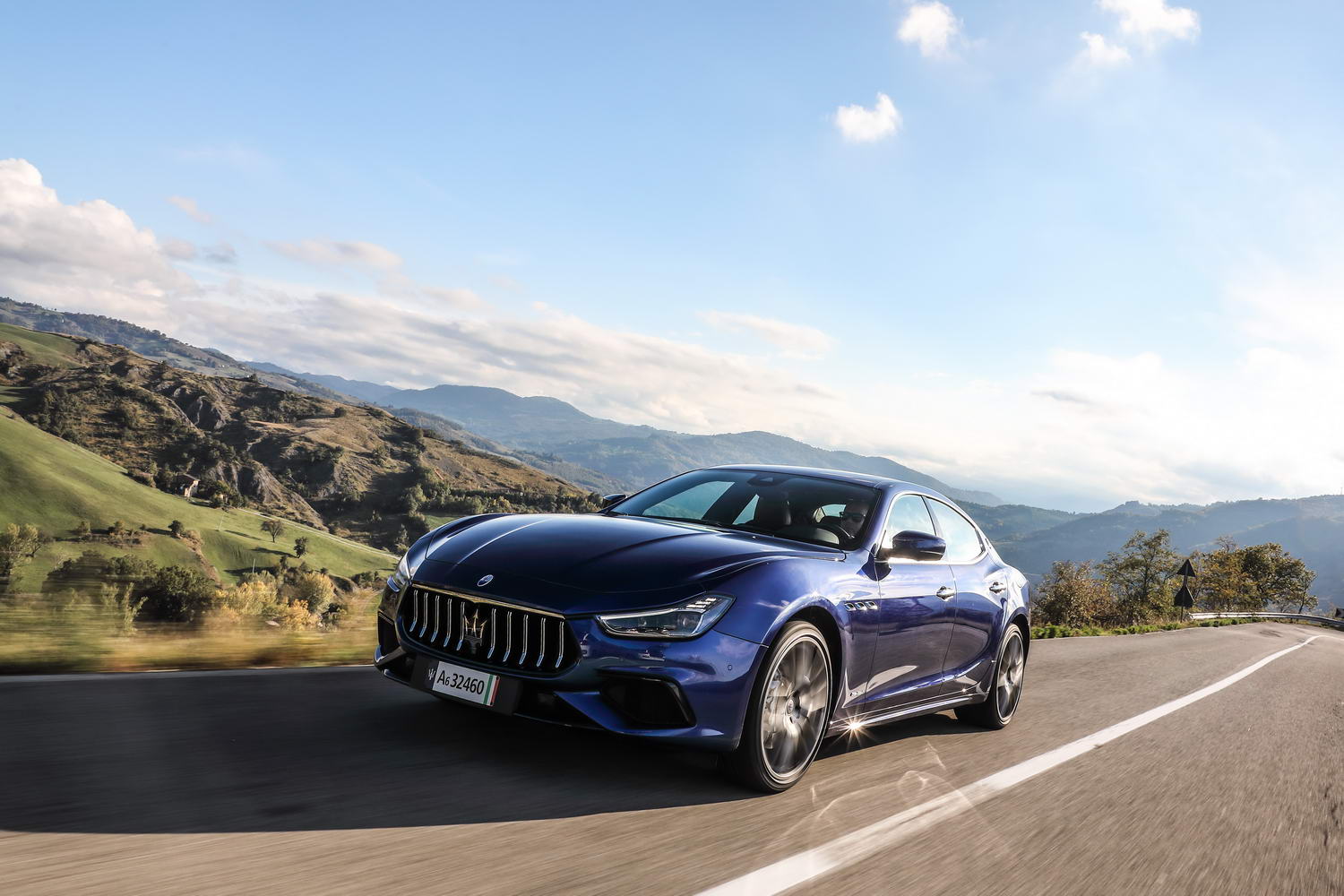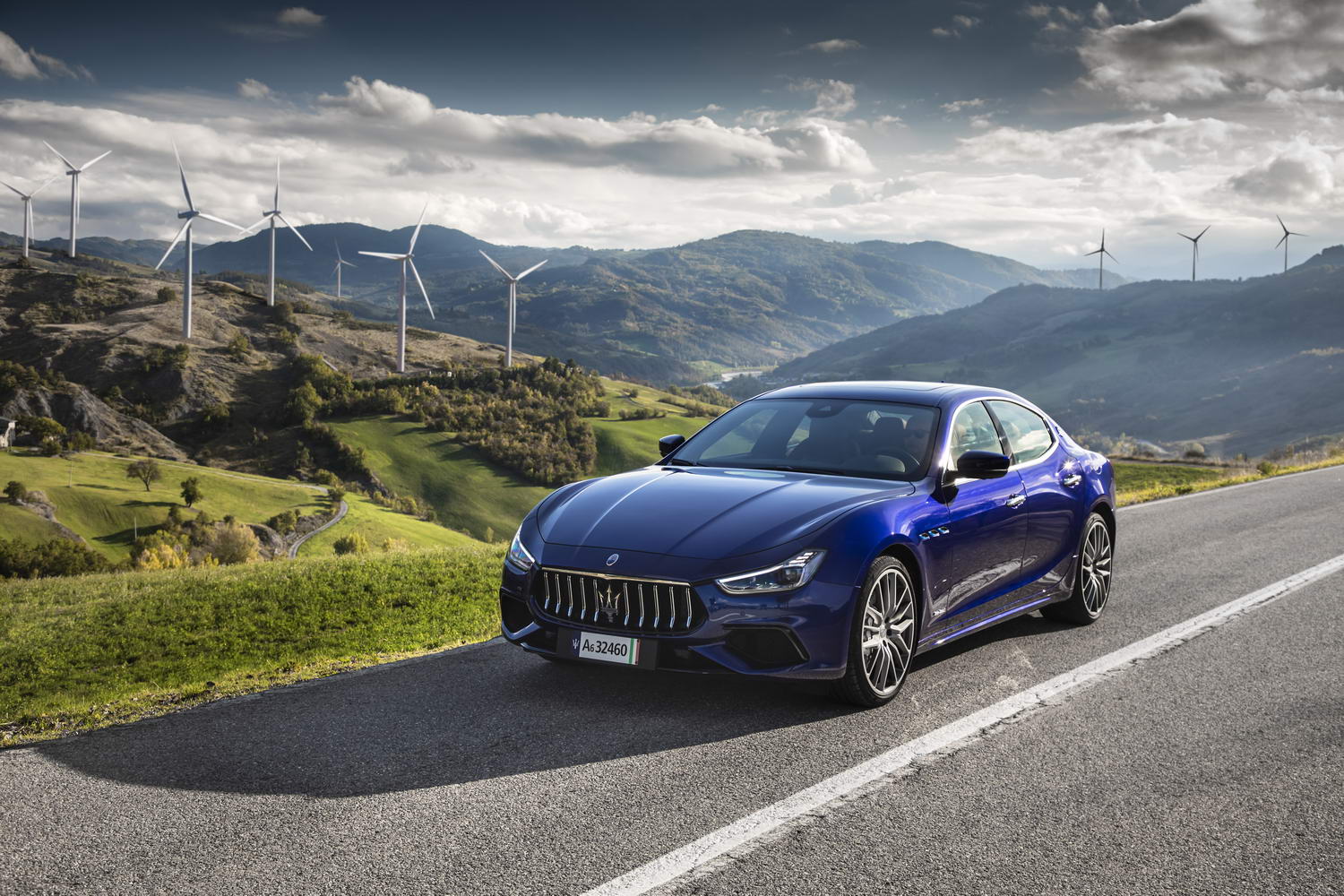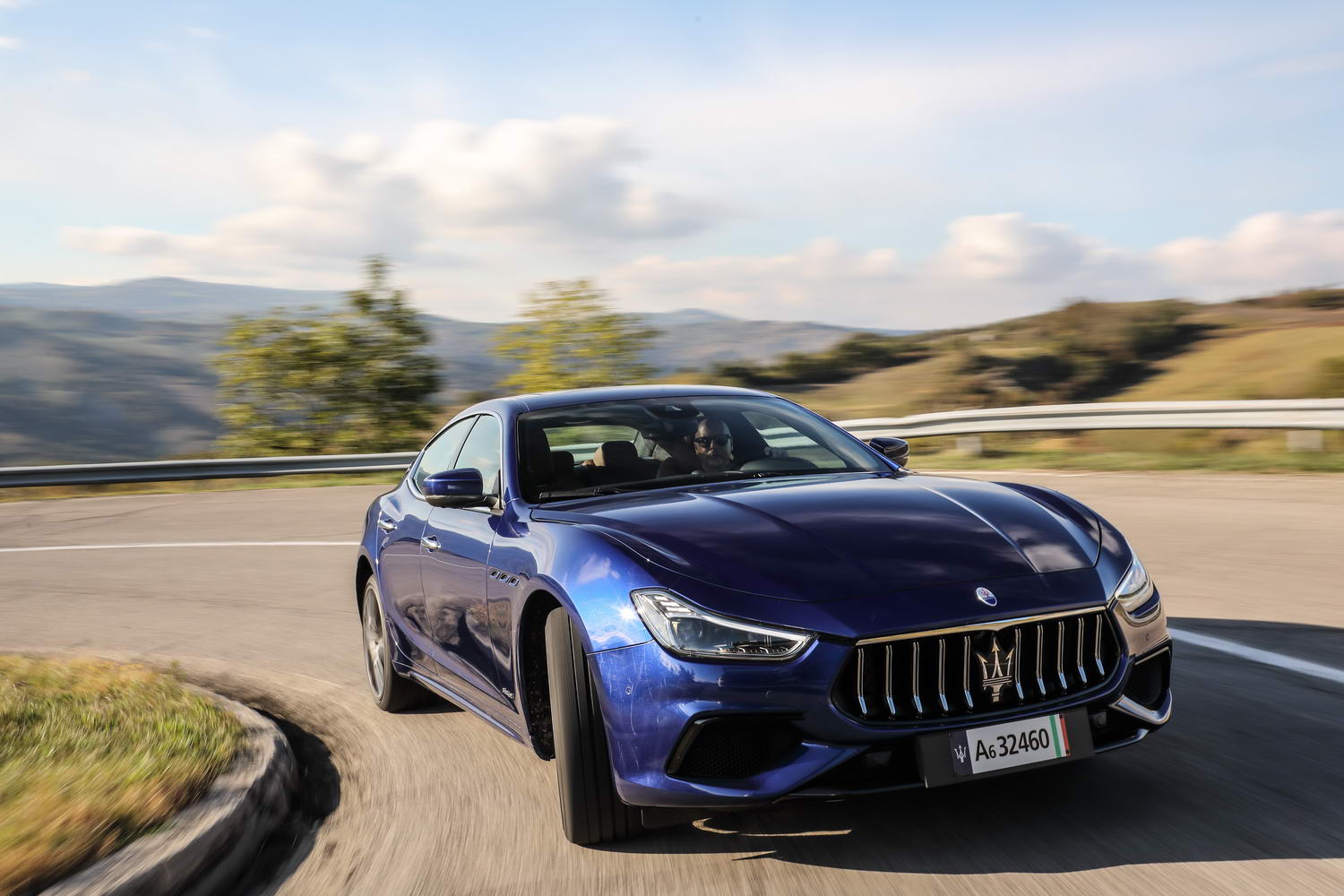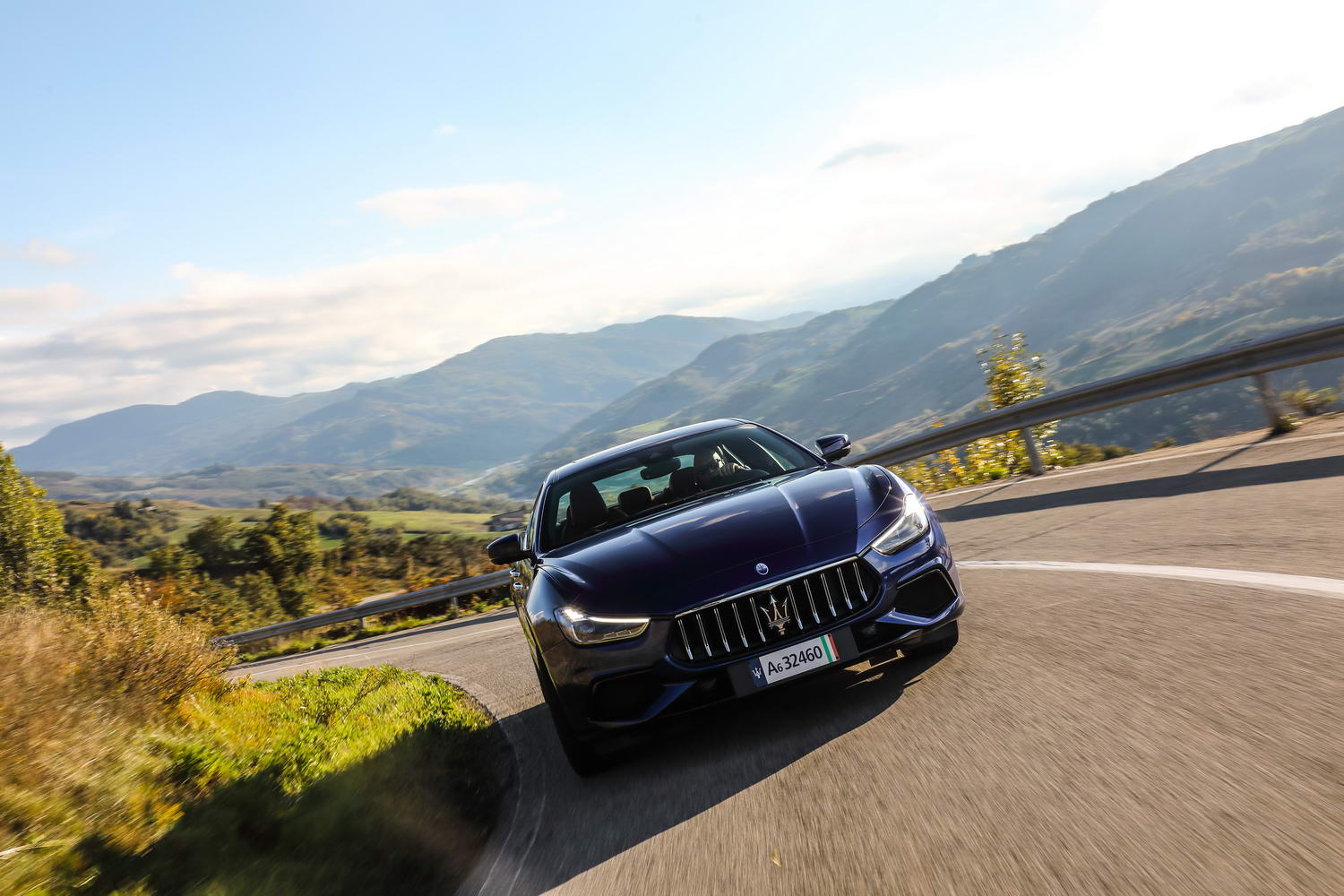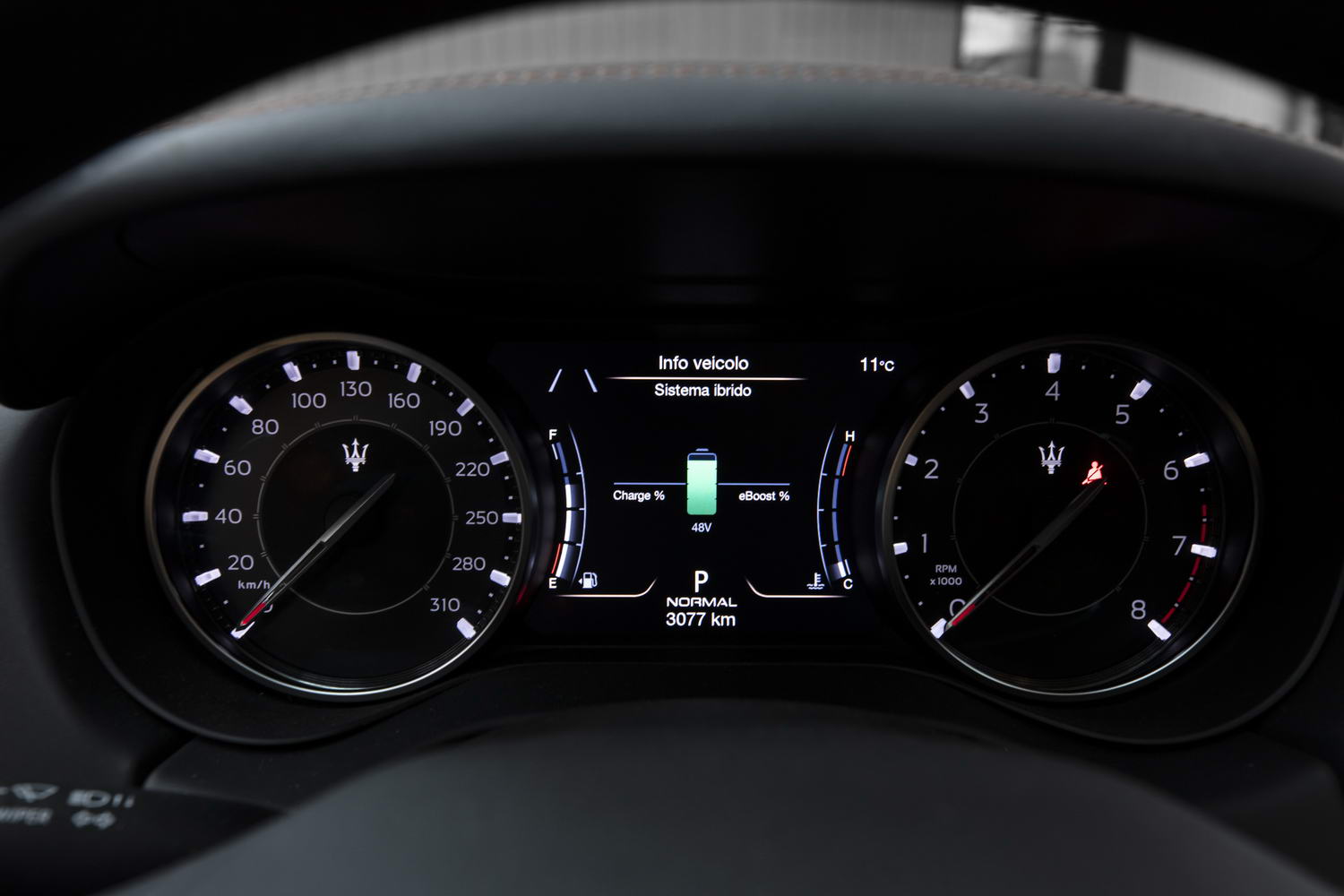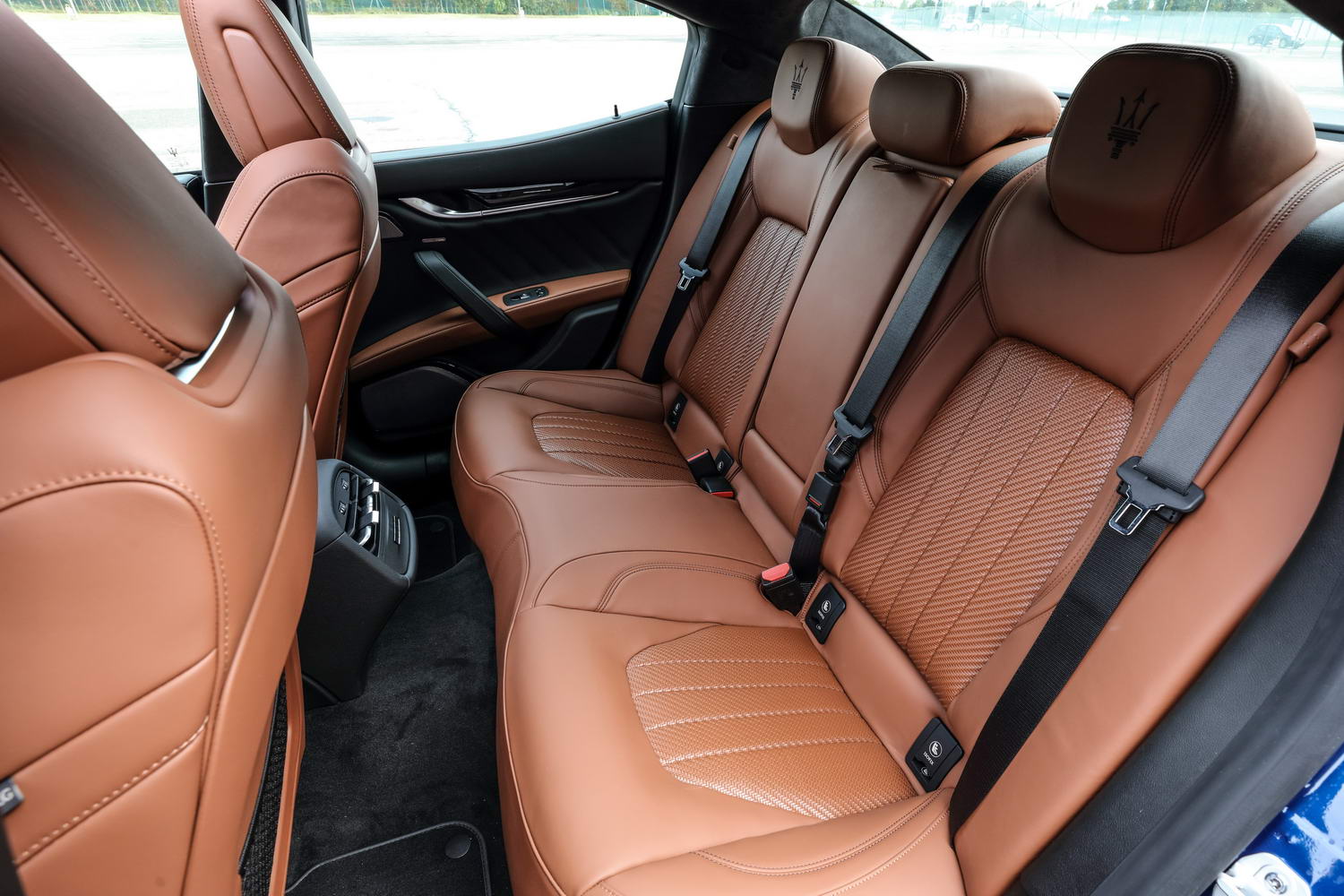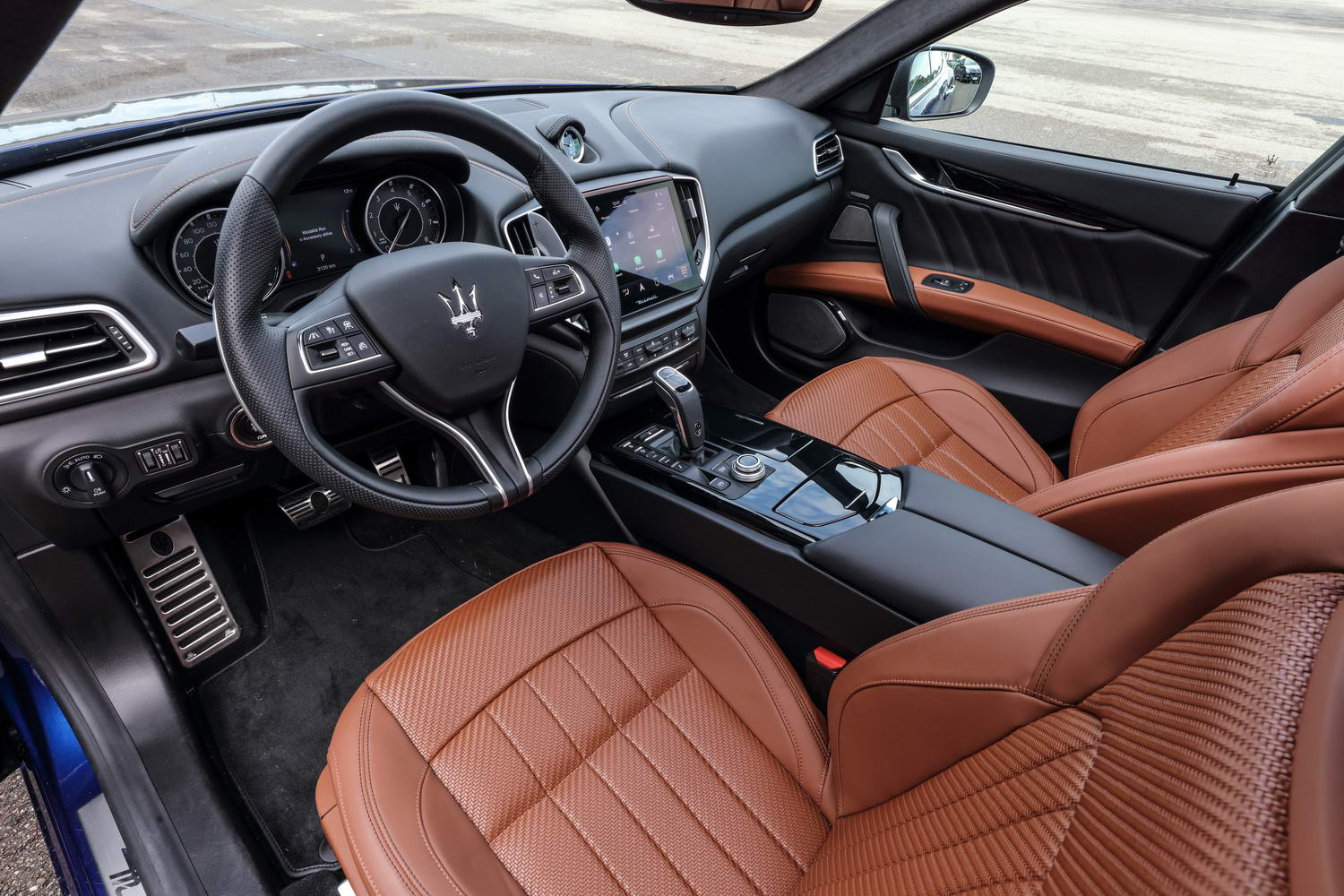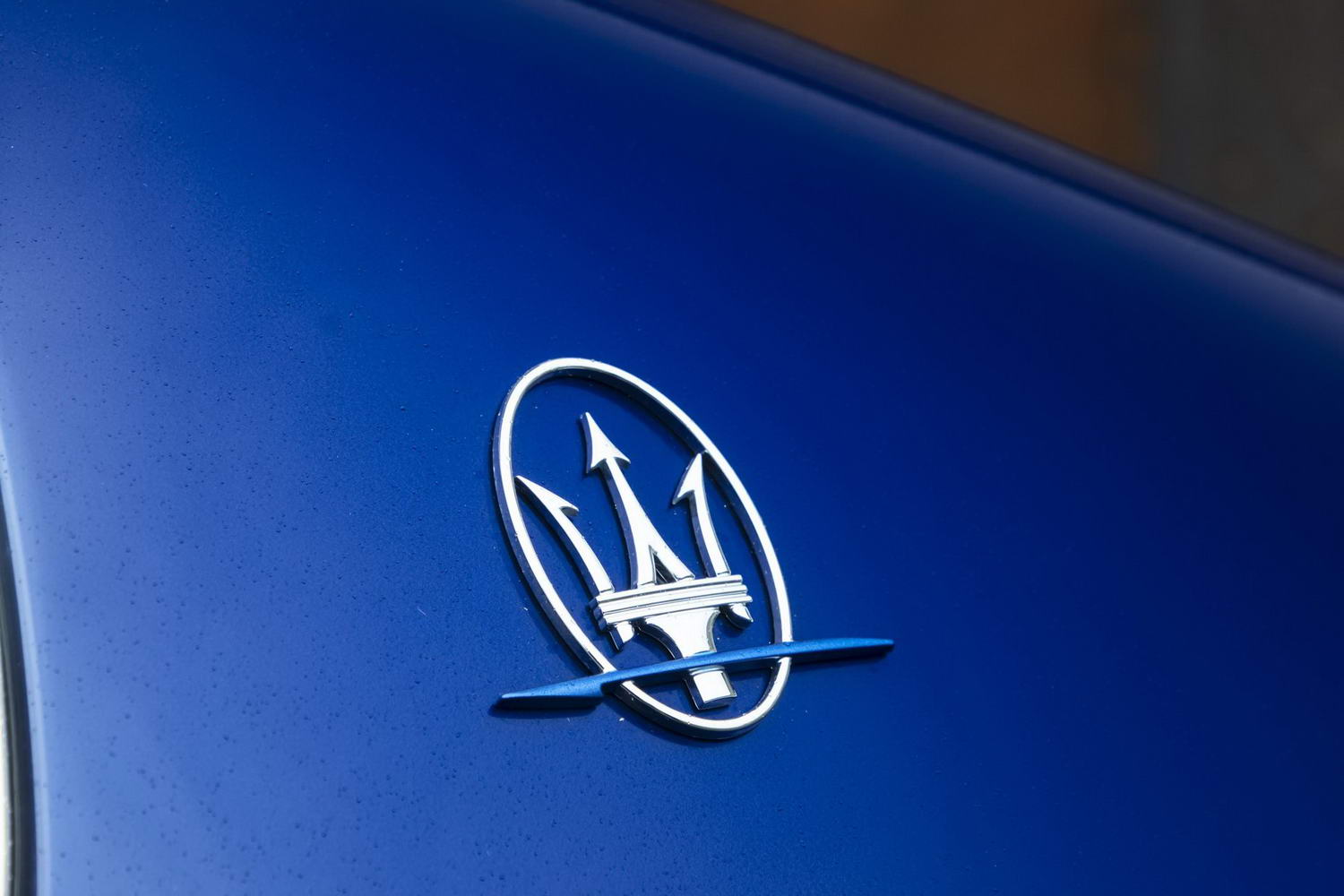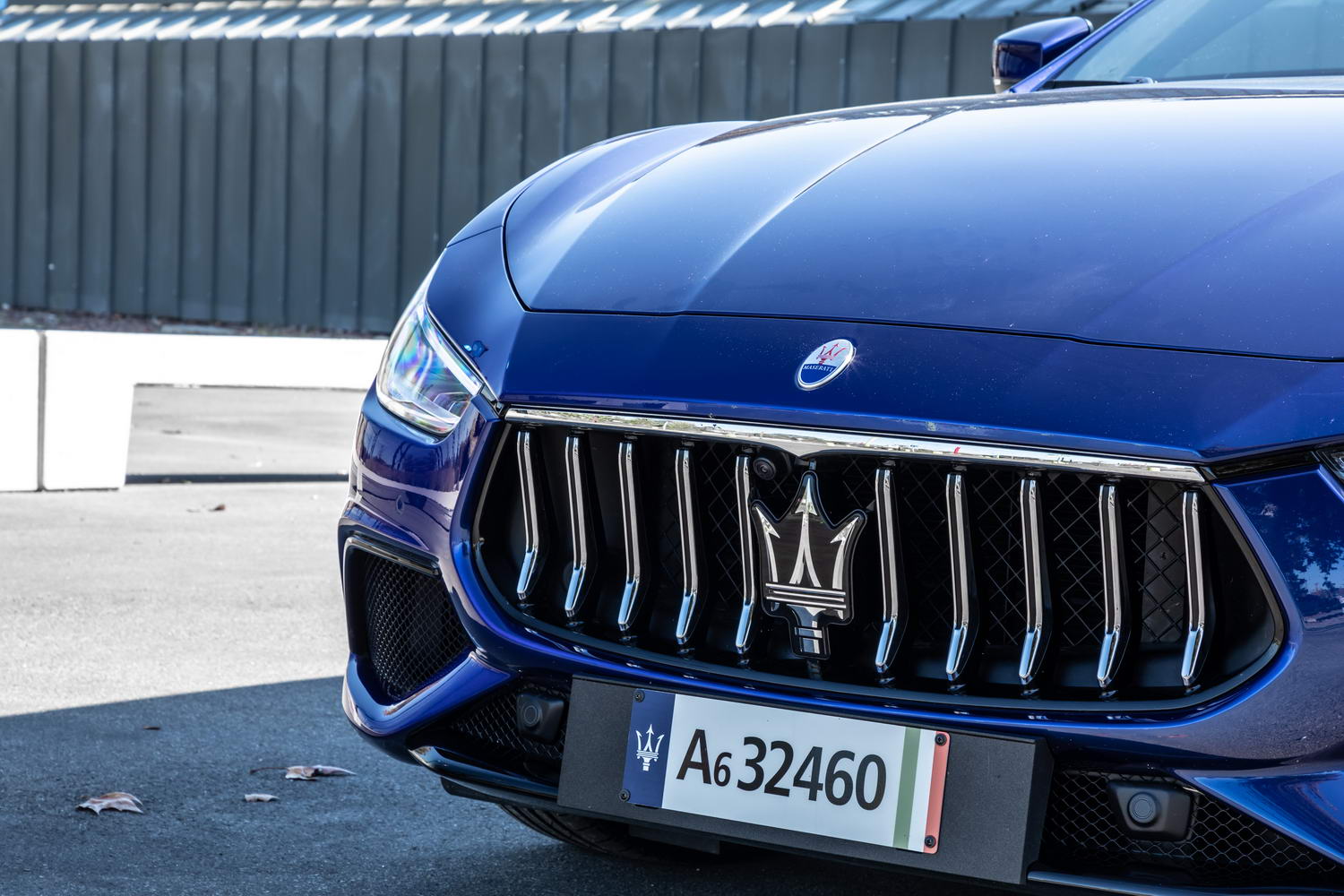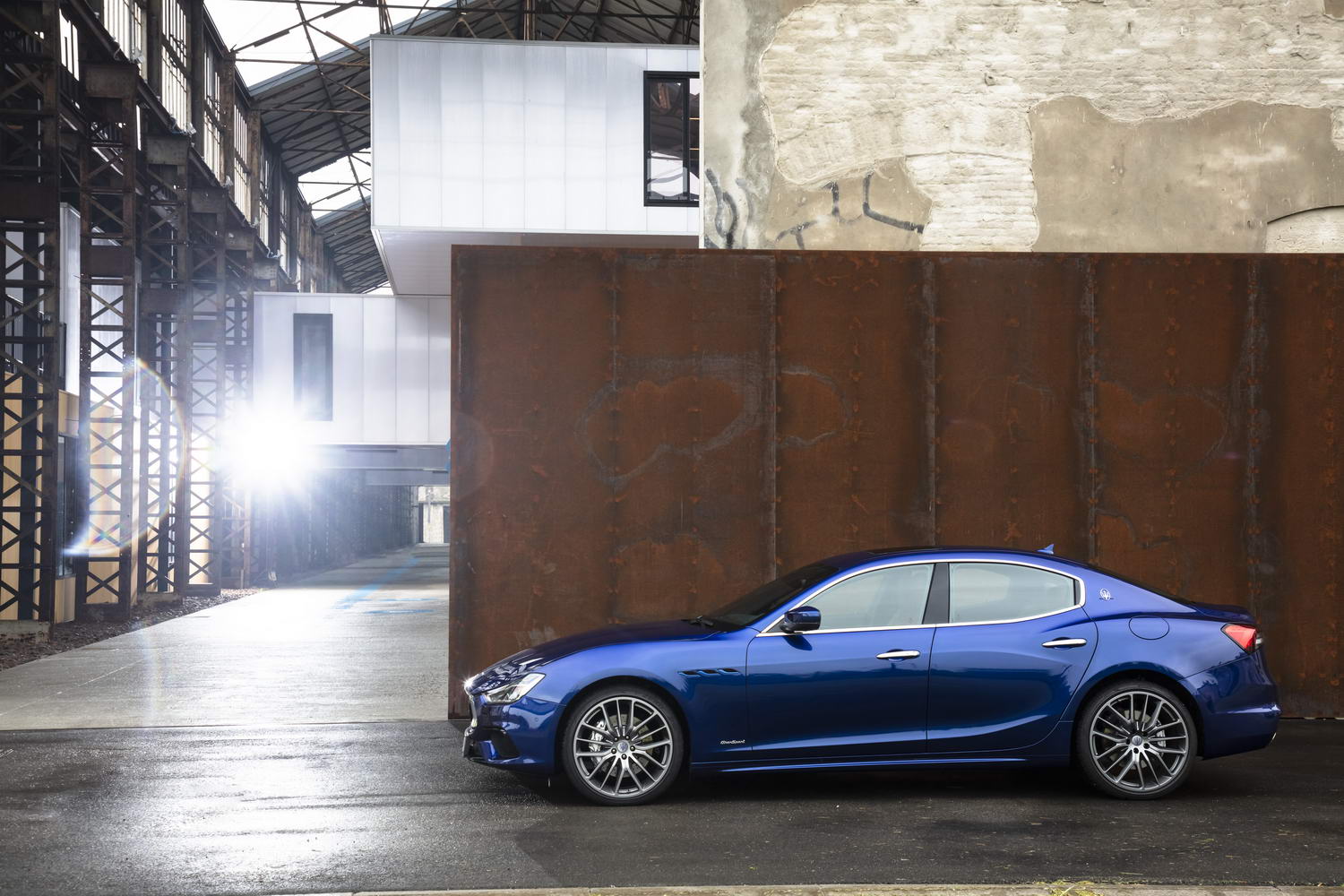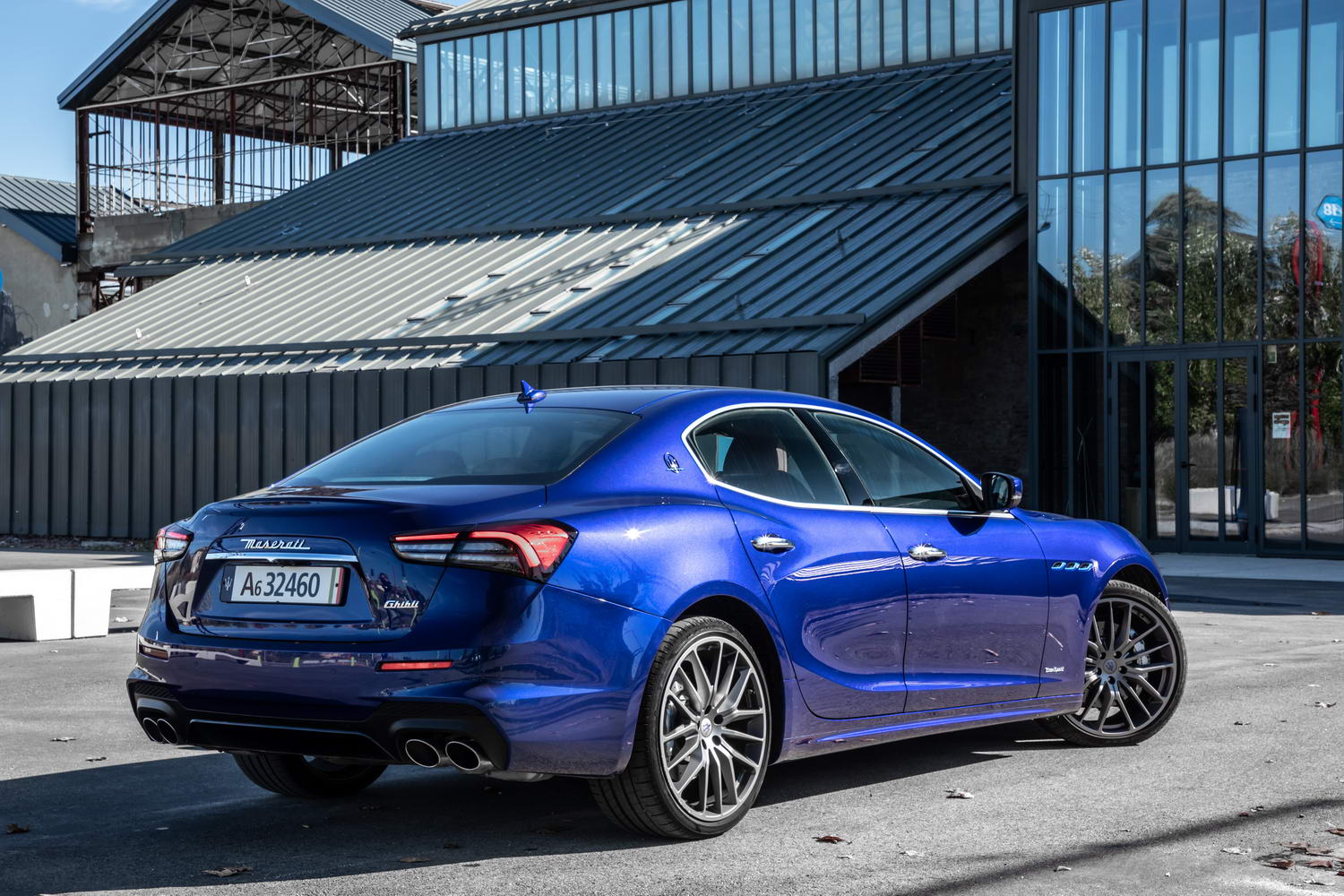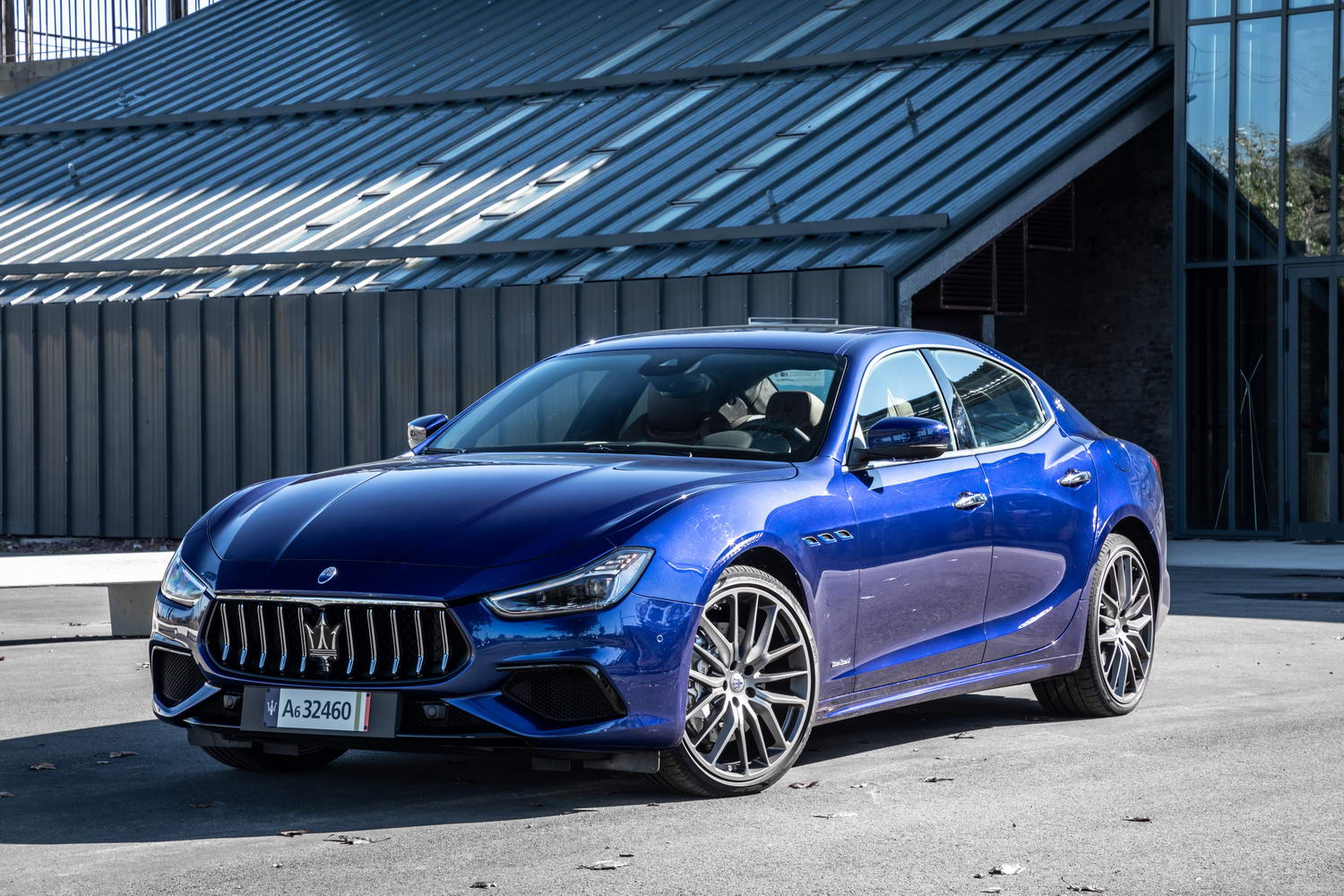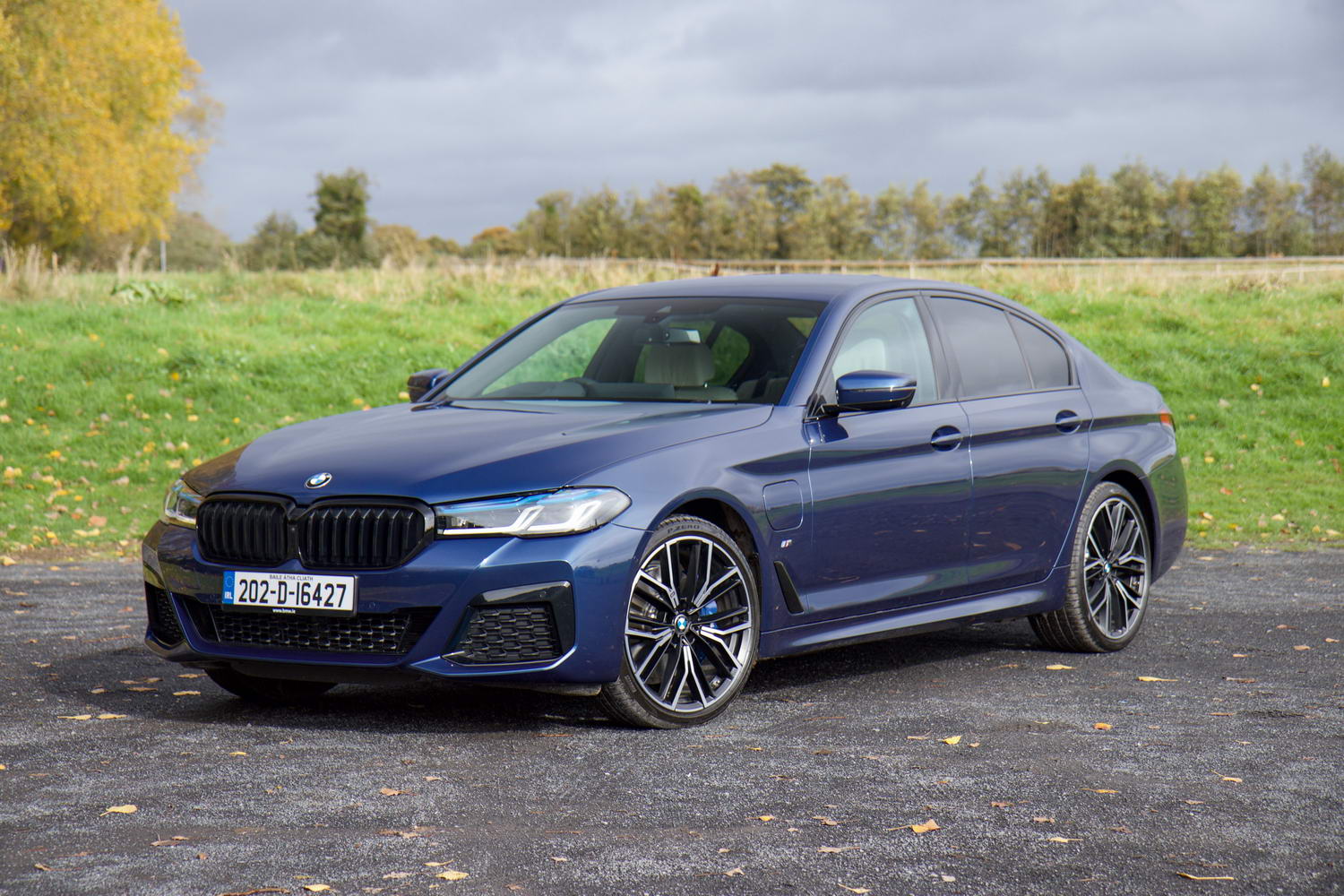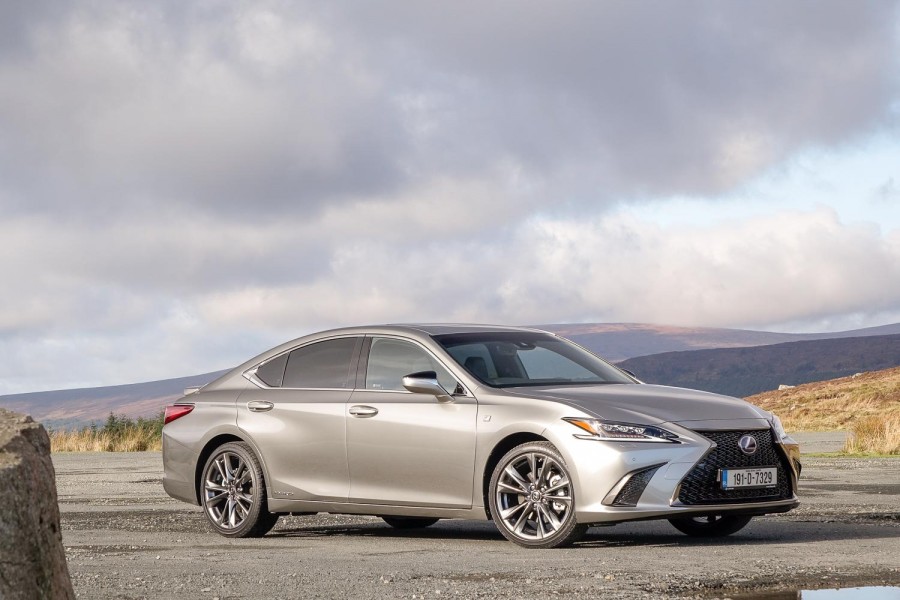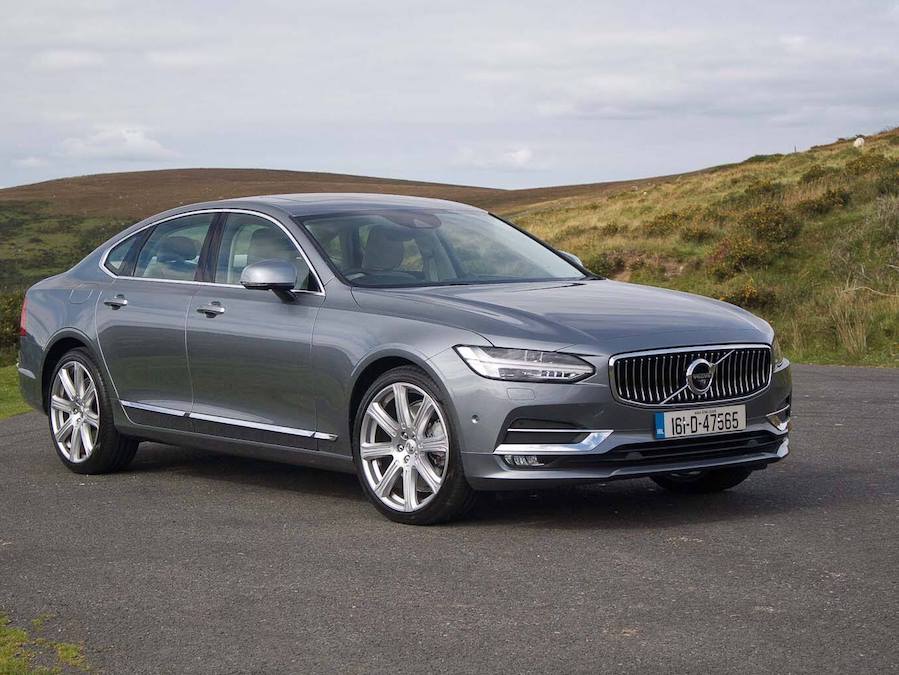Maserati moves towards electrification by making a hybrid version of its Ghibli executive saloon. Technologically speaking, the Ghibli Hybrid feels like it is way off the pace right now, but at least interior updates smarten the cabin and the refinement of the overall car is good.
In the metal
The Ghibli has been around since 2013, so it is getting on a bit these days and it was never Maserati's finest styling hour in the first place. Granted, if you look back through the Italian company's history then you'll see some impossibly pretty machines, but even stripping those out of the equation then it has to be said the Ghibli is inoffensively handsome, rather than startlingly attractive.
To keep it fresh for the 2020s, a new style of radiator grille with a 'tuning fork' design is drafted into service, while at the back the lamp clusters now feature a nod to the old boomerang design that was so mercilessly stripped off the back of the Maserati 3200GT in the early 2000s.
What marks the Hybrid out amidst its Ghibli peers are flashes of light blue on the three gills of the front wings, on the 'lightning bolt' in the Maserati Trident graphic on the C-pillar and, optionally if the Ghibli owner so desires them painted this way, for the brake callipers.
Inside, the infotainment system has been tidied up and it looks pretty decent, although it will of course be bypassed by owners who simply use their smartphones as the main interface. The Ghibli Hybrid supports Apple CarPlay, either via USB cable or wirelessly, and Android Auto, via means of a cable only, so it's up to date on that score.
Elsewhere, there are other nice details, like exquisite metal paddle shifts on the steering column, plush leather seats and a generally tidy-looking instrument cluster, but it's by no means knock-out or even class-leading inside.
The steering wheel is particularly odd, as all around its circumference is a black piece of joining trim that makes it feel square in your hands rather than round, and for all the Ghibli's 2,998mm wheelbase (that's long by any car's standards, never mind this particular sector of the market), it's surprisingly poky in terms of rear-passenger legroom and space.
Overall, the Ghibli is perfectly pleasant on the outside and within, and it certainly doesn't feel light years off the cabins of the best-in-class competitors, but it's certainly not jaw-dropping in any aesthetic regard.
Driving it
Oh. Maserati, what have you done here? With that usual bravado that accompanies a marque trying this electrification thing out for the first time, all the benefits are presented front and centre: so the Hybrid's drivetrain is as powerful as a V6, but as frugal as a diesel; the weight distribution of the car is better; the CO2 emissions are reduced; and the company has worked hard to keep the traditional 'Maserati growl' present, despite the engine's relative lack of cylinders (which we shall come onto in a moment).
All well and good. But the Ghibli Hybrid is not exactly pushing the boundaries of the technology available right now. Because it's not, as most of its rivals aim to be these days, a plug-in hybrid. It's not even a series hybrid, which can run on electric power for a short length of time, like the Lexus we cite below in the Alternatives.
No, the Ghibli is a 48-volt 'mild hybrid'. It pairs a 2.0-litre four-cylinder turbocharged petrol engine with a Belt Starter Generator (BSG), an eBooster (that's an electric compressor, or turbo), a DC/DC converter and a small battery.
With a compact engine up front and the battery at the back, Maserati says the weight distribution is near-perfect in the Ghibli Hybrid. However, despite 50:50 front-to-rear balance and rear-wheel drive, all of the above adds up to a distinctly underwhelming driving experience.
First up, the hybrid system is mild to the point of innocuous. You won't once notice it doing its energy-harvesting thing during braking and there is no real point where the Ghibli coasts, engine-off, in normal running to reinforce the notion of planet-saving efforts in your mind.
So then it just feels like you're in a 2.0-litre turbocharged car, and not a particularly good one at that. The headline stats are 330hp, 450Nm and a 5.7-second 0-100km/h time, but the Ghibli Hybrid never, ever feels anything like as potent as those numbers suggest it will. Blame a 1.9-tonne kerb weight for such tardiness, but when you plant the throttle in the Maserati, you certainly don't get Italian supercar performance.
Everything's pretty refined, however. The Maserati rides comfortably and quietly around town, and there's an assured nature to its major controls that makes it easy to steer and manoeuvre. Its ride quality isn't perfect, though, not by a long chalk, and it also has some quite bizarre body control over crests taken at speed; the whole shell of the car feels like it is wobbling around at the top of its springs if you ask it to charge along an undulating back road.
Feel-free steering also robs you of any enjoyment of hustling the Maserati Ghibli Hybrid and that 'growl' we were told about at the start of proceedings? Hmm. It's no match whatsoever for some of the Italian firm's V6 and V8 sonatas of the past, which is perhaps an unfair comparison, but it's also not particular tuneful as modern four-cylinder engines go.
What you get for your money
The problem with the Maserati in this regard is not so much that it lacks for equipment compared to its rivals, but that it is just mighty expensive to buy in the first place. Maserati still views itself at a level above the likes of Audi, BMW, Mercedes, Jaguar, Volvo and Lexus, and it shows in the robust pricing.
It's made worse here in Ireland where the Ghibli's modest hybrid gear only reduces the CO2 emissions (yet to be fully homologated) to a figure of between 192- and 216g/km. Doesn't matter which one it eventually comes out at, as either will see it incurring the maximum 37 per cent VRT for emitting more than 191g/km.
That means the Ghibli Hybrid starts from (are you sitting down?) around €110,250 and rises to a basic figure in the region of €122,687 for a GranLusso like our test car. A much-more-advanced plug-in-hybrid BMW 530e, by comparison, starts at under €60,000 here.
Summary
The Maserati Ghibli Hybrid is, sadly, far too little, way too late. Mild hybrid executive cars like this might have got away with such a tentative electrification approach in the mid-2010s, but by now, everyone wants much more zero-emissions benefit from any sort of hybridised vehicle and the Ghibli offers nothing of note in this regard.
With that element taken away, what you're left with is a passable saloon car with an underwhelming engine, a so-so cabin, smart but not striking looks and a price tag that's off the charts. If you really, really, really want a Maserati with every fibre of your being, then the Ghibli Hybrid might - it just might - be worth a look. Otherwise, there are far better options elsewhere in this class in 2021.

